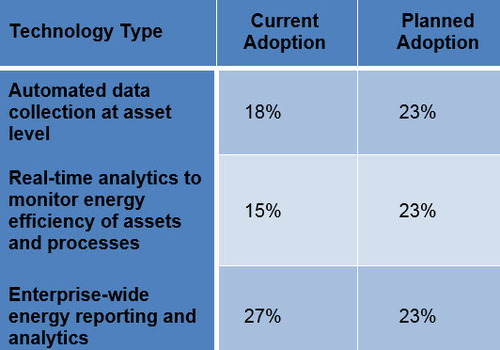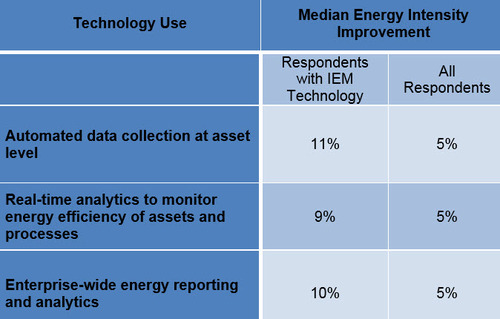Elevating Your Energy Management Goals with IEM Software
Looking at a manufacturing organization, energy is as critical an input as the ingredients (or sub-components) found within the bill of materials. When speaking of production costs, energy may compose 5% to 30%, and sometimes more, of the total. As such an important operational component from both a cost and environmental standpoint, organizations recognize the value and importance of being as efficient as possible.

Why then do we see so many companies trapped in an endless cycle of chasing "low hanging fruit" improvements such as HVAC, compressed air, or lighting systems when bigger and more important improvements like energy around the bill of materials, and production and process efficiency costs are left to operate in a suboptimal manner?
Because many of them lack the technological capabilities to even see where these areas can be improved.
The Importance of Increased Visibility and Real-Time Metrics
It's obvious that companies want to cut costs wherever possible but in the realm of energy management, companies are being driven by both increased competition and environmental concerns. Regulations have put pressure on industrial companies to increase their reporting, and companies are making aggressive public commitments to produce these corporate sustainability reports and make reductions in energy use and carbon emissions.
Despite what may be a progressing operational mindset about energy expenditures, as mentioned above, many companies lack the technology to make the type of improvements around production and energy intensity that will only become more important as time presses on.
The cycle of getting caught in "low hanging fruit" improvements stems from a lack of visibility into the more complex energy areas like energy on the bill of materials and production schedule and process optimization. These latter energy inputs have a much higher degree of complexity resulting from various and ever-changing factors, things that are typically too resource intensive to accurately monitor using paper-based or other manual systems.
This is where today's Industrial Energy Management (IEM) software solutions are driving value for manufacturers. IEM applications enable companies to gain a much better view into the greater energy management picture through the key capabilities of automated data collection, real-time analytics, and enterprise-wide reporting.
LNS Research Industrial Energy Management Survey
In a recent survey conducted by LNS Research, more than 200 executives across industries were asked a number of questions about their objectives, challenges, and current energy management initiatives.
As the table below shows, survey respondents are in various stages of implementing IEM capabilities today, with between 15% and 27% of respondents possessing asset level automated data collection, real-time analytics, and enterprise-wide reporting. More interesting to note is that 23% of respondents are planning to implement each of these categories over the next year, an indication that the capabilities IEM delivers as they relate to growing sustainability initiatives are gaining mindshare with decision makers.

Understanding the Value of IEM Through the Energy Intensity Metric
One of the key ways in effectively understanding the value driven by IEM investments is in cross-analyzing that adoption with performance improvements. And one way of doing this is to measure and compare Energy Intensity. Energy Intensity is the given amount of energy required to make a unit of product. Due to its nature as a metric that encompasses many factors, it's a strong and accurate indicator on the impact of technology adoption around energy management.
Drawing back to the survey, and looking at Median Energy Intensity Improvement in respondents that had adopted IEM technology vs. all respondents, we can see a dramatic improvement among the adopters, in some cases by 200%.

These are significant improvements in energy expenditures. Moreover, the capabilities employed to make these reductions are only becoming more important as time moves forward and reporting requirements increase along with competition among industries. Companies that are working to implement these automated, real-time and enterprise-wide capabilities around energy management will be best positioned to navigate the growing world of compliance and reporting requirements, and improve their bottom lines in the process.
Driving Increased Productivity and Profit with IEM Software
Above we've touched on the importance of the technology component of IEM. While these next-generation capabilities are increasingly vital to meeting the growing sustainability reporting of the day, they are one single component of a comprehensive IEM framework that includes effective leadership and organizational culture, formal processes that include cross-functional stakeholders and align to the overall goals of the enterprise, and a robust, supporting set of metrics to accurately benchmark performance and monitor goals.
To learn more about aligning these key resources to elevate your energy management capabilities, download the free LNS Research eBook "Driving Productivity and Profit with Industrial Energy Management."
 Written by
Written by